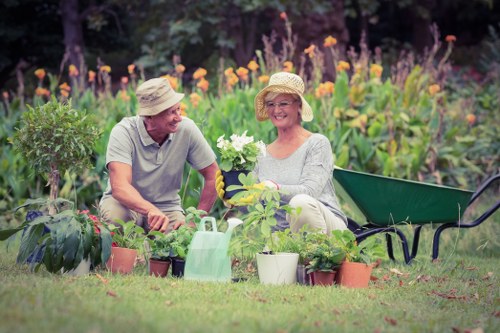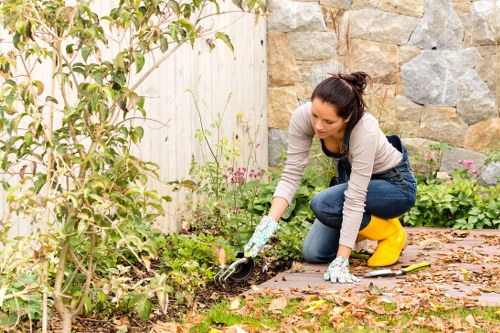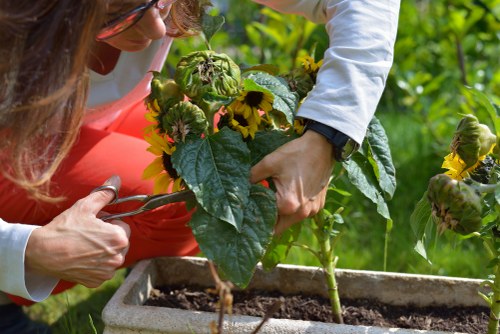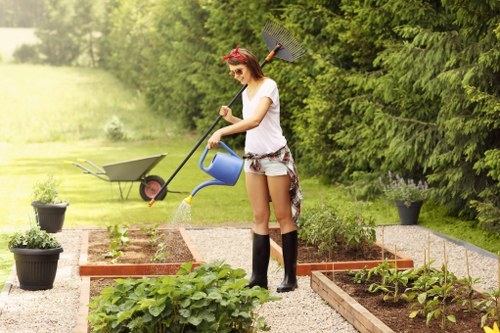Gardeners Poplar: A Comprehensive Guide

Poplar trees are a favorite among gardeners for their fast growth, vibrant foliage, and adaptability. Whether you're looking to create a privacy screen, add aesthetic value to your garden, or simply enjoy the shade, Poplar trees can be an excellent choice. This guide delves into everything you need to know about Gardeners Poplar, from planting to maintenance.
Understanding the different varieties of Poplar is crucial for selecting the right tree for your garden. Some popular types include the Lombardy Poplar, Eastern Cottonwood, and the Black Poplar. Each variety has its unique characteristics, making them suitable for different garden settings and purposes.
When planting a Poplar tree, it's important to consider the climate and soil conditions of your area. Poplars thrive in well-drained soil and can tolerate a range of climates, but they perform best in regions with adequate rainfall and moderate temperatures.

Benefits of Planting Poplar Trees
Poplar trees offer numerous benefits to gardeners and the environment. Their rapid growth rate makes them ideal for quick shade and windbreaks. Additionally, Poplars are known for their ability to improve air quality by absorbing pollutants and producing oxygen.
Another significant advantage is their ornamental value. With their tall, slender trunks and lush foliage, Poplars add vertical interest to gardens and landscapes. In the fall, their leaves often turn vibrant shades of yellow and orange, providing a stunning visual display.
Poplars also provide habitat and food for various wildlife species. Birds, insects, and small mammals find shelter and sustenance in and around these trees, contributing to a healthy garden ecosystem.

Planting and Caring for Poplar Trees
Choosing the Right Location
Selecting the appropriate location for your Poplar tree is vital for its growth and longevity. Poplars prefer full sun to partial shade and require ample space to accommodate their expansive root systems and canopy. Avoid planting them too close to buildings or underground utilities to prevent future issues.
Soil Preparation
Preparing the soil before planting ensures that your Poplar tree has the best possible start. Loosen the soil to a depth of at least two feet and mix in organic matter such as compost to improve fertility and drainage. Poplars are adaptable but thrive in rich, moist soils.
Planting Process
- Dig a Hole: The hole should be twice as wide and the same depth as the root ball.
- Place the Tree: Position the Poplar in the hole, ensuring that the top of the root ball is level with the ground surface.
- Fill and Water: Fill the hole with soil, firming it gently around the base. Water thoroughly to settle the soil.

Maintenance Tips for a Healthy Poplar
Maintaining a healthy Poplar tree involves regular care and attention. Here are some essential maintenance tips:
- Watering: While Poplars are relatively drought-tolerant, regular watering during the first few years ensures strong root development.
- Pruning: Prune annually to remove dead or diseased branches and to shape the tree. Late winter or early spring is the best time for pruning.
- Fertilizing: Apply a balanced fertilizer in the spring to promote healthy growth. Avoid over-fertilizing, which can lead to excessive foliage at the expense of root strength.
Monitoring for pests and diseases is also crucial. Common issues include aphids, mites, and fungal infections. Prompt treatment can prevent minor problems from becoming severe.

Local Relevance: Poplar Trees in Nearby Areas
Poplar trees are not only popular in gardens but also play a significant role in various nearby regions. Here are some of the closest areas to Poplar that benefit from these versatile trees:
- Poplar Grove: Located just 5 miles north, Poplar Grove is renowned for its expansive Poplar plantations, offering scenic walking trails.
- Riverdale: 8 miles east, Riverdale utilizes Poplar trees for riverbank stabilization and as windbreaks in agricultural fields.
- Mapleton: Situated 10 miles south, Mapleton's urban parks feature Poplar trees, providing shade and enhancing the landscape.
- Greenfield: 12 miles west, Greenfield benefits from Poplar-lined streets that improve air quality and aesthetics.
- Oakridge: 15 miles northeast, Oakridge's community gardens incorporate Poplar trees to create microclimates for diverse plant species.
- Lakeside: 18 miles southeast, Lakeside uses Poplars around its lake to prevent soil erosion and provide wildlife habitats.
- Sunnyvale: 20 miles northwest, Sunnyvale's residential areas have planted Poplars for their fast growth and ornamental value.
- Hilltown: 22 miles southwest, Hilltown leverages Poplar trees for timber and as a renewable resource.
- Riverside: 25 miles northeast, Riverside's botanical gardens showcase various Poplar species, educating the public about their benefits.
- Brookside: 28 miles east, Brookside incorporates Poplar trees in its landscaping projects, enhancing property values and curb appeal.
Conclusion
Gardeners Poplar trees are a remarkable addition to any garden or landscape. Their rapid growth, environmental benefits, and aesthetic appeal make them a favorite among gardening enthusiasts. By selecting the right variety and providing proper care, you can enjoy the numerous advantages that Poplar trees offer for many years to come.
Frequently Asked Questions
- 1. How fast do Poplar trees grow?
Poplar trees are known for their rapid growth, often growing 5 to 8 feet per year under optimal conditions.
- 2. Are Poplar trees suitable for small gardens?
While Poplars can thrive in small gardens, it's essential to choose a dwarf variety and ensure adequate space for their root systems.
- 3. Do Poplar trees require a lot of maintenance?
Poplars require regular watering, annual pruning, and occasional fertilizing to maintain their health and appearance.
- 4. Can Poplar trees improve air quality?
Yes, Poplar trees absorb pollutants and produce oxygen, contributing to better air quality.
- 5. What are common pests that affect Poplar trees?
Aphids, mites, and fungal infections are common pests and diseases that can affect Poplar trees. Regular monitoring and prompt treatment are essential.